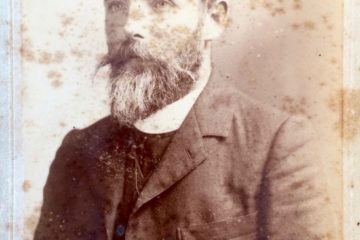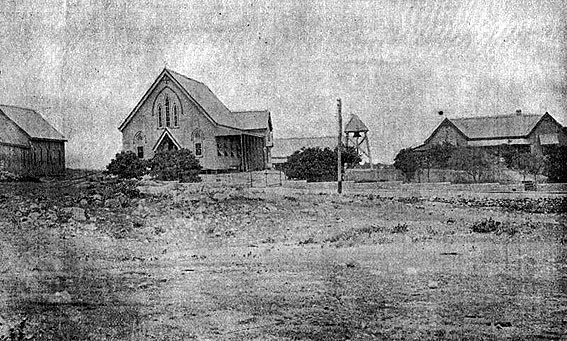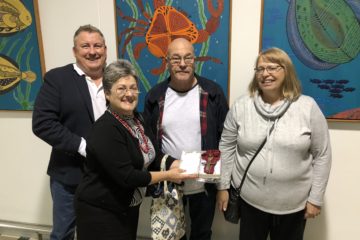Northern missions
ABOVE: Canon Garland, the former Church of England Archdeacon for North Queensland and Rector of Charters Towers Parish, visited the Presbyterian Church-run mission at Mapoon between 29 April and mid-May, 1911. This image depicts the main street of Mapoon, south of the J.G. Ward Memorial Church, as it looked to journalist, Thomas McMahon, in September 1916. This image is from the State Library of Queensland collection. It was copied and digitised from an image appearing in “The Queenslander” edition of 16 December 1916 (page 23). On Sunday evening, 4 June 1911, Canon Garland, Rector of Holy Trinity Church, Woolloongabba, addressed a meeting of his South Brisbane parishioners on his impressions of the previous month’s tour of remote Cape York mission settlements in the entourage of Queensland’s Home Secretary, John George Appel.
NORTHERN MISSIONS.
ADDRESS BY CANON GARLAND.
Rev. Canon Garland [ David John Garland ], who was one of the Home Secretary’s party during its recent [ 29 April-mid May, 1911 ] northern tour, made special reference at Holy Trinity Church, Woolloongabba, last evening to mission work in the North.
He spoke of wonderful experiences, and wonderful evidence of the efficacy of Christianity as a civilising and humanising power among savage races [ sic ], and said that details of all that he saw would have to be reserved for a lecture.
For himself he had returned strengthened in faith and with a fresh heart and courage for his work, convinced more and more how ill-founded were the assertions of those who said there was no work of the Holy Ghost to-day, and that Christianity was a spent force.
At these missions he had seen its potency in turning natives, who less than 20 years ago were turbulent, cruel, and cannibalistic, into peaceful, kindly people, as earnest in their religion as any white Christians.
If he had gone there as an aggressive unbeliever he would have returned convinced.
One of the missions they visited was at Cape Bedford, in the extreme North, which was in charge of Pastor Schwartz [ sic, Georg Heinrich Schwarz ], who was a hero in every sense of the word.
Directly under his charge were 115 natives, from personal observation he (Canon Garland) was satisfied that it was a Christian mission and the natives were earnest Christians.
When Pastor Schwartz [ sic ] commenced his work among them they were cannibals, and some survived who took part in a cannibalistic feast before his arrival. That was a Lutheran Mission.
At Mapoon, on the Batavia River, there were 240 natives under the direct care of the mission, and 300 in the native reserve.
He visited the school, and he could only say that he had been in white State schools where the work was not so well done.
So completely had the character of the natives changed that Mr. Hey [ Johann Nikolaus Hey ], who was in charge, did not fear to leave his wife and children in their care, while at the invitation of the minister he visited some other missions.
That was a Presbyterian mission with a Moravian missionary in charge.
Then he visited Murray Island and Darnley Island where similarly good work had been done by The London Missionary Society.
The natives at these and other stations were on the whole happy, and had no desire to leave.
He had heard no suggestion of any intention on the part of the Government to interfere with the control of those missions.
The Home Secretary [ John George Appel ] exhibited a desire to improve the industrial and moral condition of the natives, and showed distinct kindness and encouragement as well as personal generosity to the missionaries, and he was very emphatic that nothing could civilise the natives but religion.
On the whole, he (Canon Garland) felt that the good work was not confined to any Church organisation, and that no power but that of Christian teaching could have so changed, humanised and uplifted the natives.
– from page 7 of “The Brisbane Courier” of 5 June 1911.


